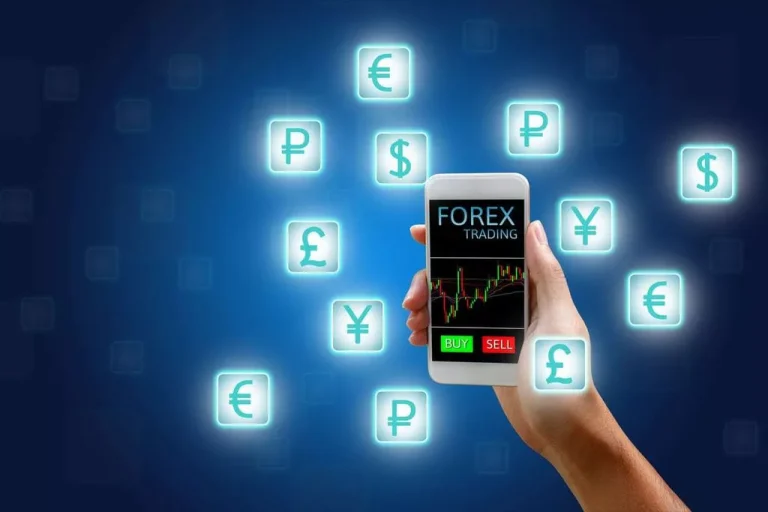The way this data is gathered, processed, stored, and analyzed determines how valuable it is. Cloud-based big data solutions boost scalability and flexibility, integrate security across all business applications, and, most importantly, provide a more efficient approach to big data and analytics. Big data is something that is setting its fingerprints in almost everything, irrespective of the business or industry you’re looking at. Nowadays, it is hard to separate the big business decisions from big data and this is especially true with regards to the finance and trading industry which is feeling the biggest influence of big data with every passing day. Robo advisors use investment algorithms and massive amounts of data on a digital platform. Investments are framed through Modern Portfolio theory, which typically endorses long term investments to maintain consistent returns, and requires minimal interaction with human financial advisors.
You can look at publicly available securities data on companies of all sizes all over the world. This will help you identify undervalued investments by screening companies with a low return on equity and other important financial variables. There has been quite a splash when it comes to the influence of Big Data in FinTech.
Similarly, if one spots a price difference in futures and cash markets, an algo trader can be alerted by this and take advantage. It can be tough for traders to know what parts of their trading system work and what doesn’t work since they can’t run their system on past data. With algo trading, you can run the algorithms based on past data to see if it would have worked in the past. This ability provides a huge advantage as it lets the user remove any flaws of a trading system before you run it live. Mean reversion is a mathematical method used in stock investing to find the average of a stock’s temporary high and low prices. It means figuring out a stock’s trading range and average price using analytical techniques.
If you do not have the expertise in-house or are not working with a trusted partner who can help guide you through the process, it can be quite challenging to successfully incorporate big data into your trading operations. In addition, big data is being used in the trading industry to help companies predict market conditions and budget for their own operations more effectively. For example, a company may use big data analytics to predict trends in supply chain costs over time. They can then use this information to ensure that they are able to keep their costs low, while still being able to operate at a high level of efficiency and profitability. If you are a trader, you will benefit from a Big Data Analytics course to help you increase your chances of making decisions. It is highly beneficial for those involved in quant trading as it can be used extensively to identify patterns, and trends and predict the outcome of events.
If traders know more about the market, they can make transactions faster and at better prices. These programs are made to find trading opportunities and make trades independently. In high-frequency trading, where exchanges are made quickly, algorithmic trading is often used. Big data is most often stored in computer databases and is analyzed using software specifically designed to handle large, complex data sets. Many software-as-a-service (SaaS) companies specialize in managing this type of complex data. It is making the markets more efficient, but also creates a lot of opportunities in foreign markets, bitcoin trading, Forex and other trading opportunities.
With the ability to make sense of large data sets with greater ease, traders can build much more informed strategies, which may lead to bigger returns on their investments in the future. These strategies will likely be able to take into account far more complex big data in trading trends, which were previously very difficult to detect (especially in the narrow times frames which traders work to). Big data, for example, provides logical insights into how a company’s environmental and social effect drives investment decisions.
This is crucial when looking for data from non-traditional sources and while managing large amounts of textual information. This is arguably one of the biggest ways that the stock market is responding to changes in big data. The issue is that traders who would manually work with Fibonacci ratios also had to fight their personal emotions. A strategy based on Fibonacci is an effective one, but then emotions creep in, making investors believe they’ve got a hot hand. They’ll make an alteration to their strategies as a result of errors resulting from emotions.
- Even if you only make a few forex transactions per day and don’t believe the question concerns you, think again.
- Social media is used for customer prospecting, customer retention, promotion of products, and more.
- Both Big data and data science play a paramount role in making informed decisions by analyzing massive amounts of data to come to a meaningful conclusion.
- With the new technologies, it’s possible to analyze data that are difficult to quantify or unstructured data.
One major challenge of Big Data’s application is the setup of a Big Data infrastructure. Gathering of Big Data requires, amongst others, capital, adequate legislation for data security, facilities and human potential for data collection, data storage, data analysis and data https://www.xcritical.in/ output. Challenges include the availability of skills, adequate sources of power, and the ownership of data farms and exabyte facilities. Missing or incomplete legislation protecting users from data misuse greatly hampers trade in services and data collection from it.
This is critical, particularly for millennial investors, who tend to be more concerned with the social and environmental consequences of their investments than with the financial aspect. The quintillions of data bytes produced everyday presents a once-in-a-lifetime opportunity for processing, analyzing, and exploiting the data in productive ways. Machine learning and algorithms are increasingly being utilized in financial trading to process large amounts of data and make predictions and judgments that people cannot. We know that technical analysis is tracing the price behavior by utilizing charts as the key tool. Technical analysis at the present day includes price trends, discount prices, changes in price related to volume mirroring, moving averages and recognition of resistance and support levels. With the constant growth in big data, there is more importance of the accuracy of technical analysis.
Traders have therefore found more consistency in numbers and hence they’re able to alleviate risks. The vast proliferation of data and increasing technological complexities continue to transform the way industries operate and compete. Over the past few years, 90 percent of the data in the world has been created as a result of the creation of 2.5 quintillion bytes of data on a daily basis. Commonly referred to as big data, this rapid growth and storage creates opportunities for collection, processing, and analysis of structured and unstructured data.
Ironically, inert statistical resources, reports, and databases come with some of the same risks that human experts bring to the table. If an unidentified person told you they could help you make decisions about which shares, currencies, or commodities to buy, wouldn’t you ask them a few questions? When using an AI-based or big data-related resource, always strive to find out the origin, age, creator, and similar characteristics of the information before using it. For the most part, investors can usually rely on major brokers for historical and AI resources that come with the sites. Big Data will continue to support innovative technologies such as Artificial Intelligence (AI) whose Machine Learning and Deep Learning Models are highly dependent on Big Data. Given the current challenges that exist around data protection legislations, it is predicted that the data collection process will become more ethical in the future guides by software, best practices, and regulations.
As markets moved to becoming fully electronic, human presence on a trading floor gradually became redundant, and the rise of high frequency traders emerged. A special class of algo traders with speed and latency advantage of their trading software emerged to react faster to order flows. Traders use data mining and machine learning to create models that predict how the market will act. Nearly every department in a company can utilize findings from data analysis, from human resources and technology to marketing and sales. The goal of big data is to increase the speed at which products get to market, to reduce the amount of time and resources required to gain market adoption, target audiences, and to ensure customers remain satisfied.
Clickstreams, system logs and stream processing systems are among the sources that typically produce massive volumes of data on an ongoing basis. Big data is also used by medical researchers to identify disease signs and risk factors and by doctors to help diagnose illnesses and medical conditions in patients. In addition, a combination of data from electronic health records, social media sites, the web and other sources gives healthcare organizations and government agencies up-to-date information on infectious disease threats or outbreaks.



